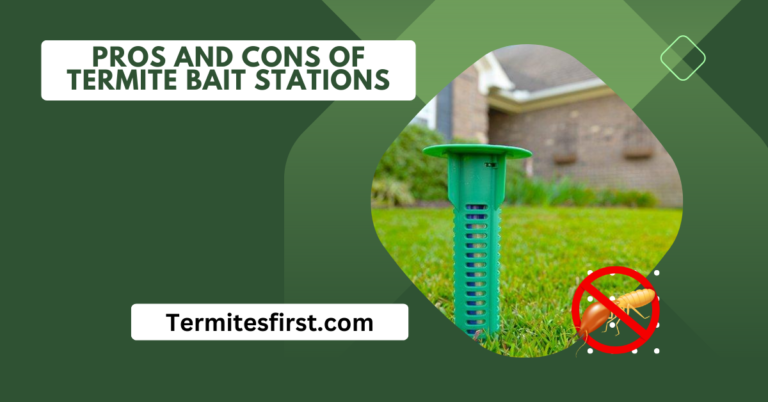Can You Carry Termites Home on Your Shoes?
Ever wondered if your shoes could be the gateway for uninvited guests into your home? Termites, those silent destroyers, can cause serious damage before you even realize they’re there. But can these pests really hitch a ride on your footwear? Let’s find out, “Can you carry termites home on your shoes?”Ever wondered if your shoes could be the gateway for uninvited guests into your home? Termites, those silent destroyers, can cause serious damage before you even realize they’re there. But can these pests really hitch a ride on your footwear? Let’s find out.
How Do Termites Spread?
One of the main ways in which termites spread is through swarming. Swarms occur when reproductive termites leave their original colony to form new ones. These winged termites fly towards light sources like streetlights or porch lights and can easily be mistaken for flying ants.
Can You Bring Termites Home on Your Shoes?

Before you worry about bringing termites indoors, consider how they typically travel. Termites move through soil and wood, their natural habitats. Preferring moist environments, they create complex underground networks to reach food sources miles away. Generally, they travel independently rather than catching a ride on humans.
However, it’s not entirely impossible to carry termites inadvertently. If you’ve been in an infested area and soil sticks to your shoes, subterranean termites might come along for the ride. Still, this is unlikely as they need specific conditions to survive and thrive, making it improbable for them to cling to shoes long enough to establish a new colony.
Common Types of Termites
There are over 2,700 known termite species, with three main types posing risks:
- Subterranean Termites – Most common, residing in homes with large colonies.
- Drywood Termites – Prefer wood with low moisture.
- Dampwood Termites – Thrive in wet or decaying wood.
Subterranean termites pose the greatest risk due to their prevalence and destructiveness. They can easily go unnoticed due to their underground activity and cause significant damage before being detected.
Preventing Termite Infestations

To protect your home from termites, follow these preventive measures:
- Remove Moisture Sources – Leaky pipes, clogged gutters, and damp wood piles attract termites.
- Trim Trees and Shrubs – Keep at least 18 inches of space between any vegetation and your home’s foundation.
- Seal Cracks and Openings – Termites can enter through even the smallest cracks in foundation walls or gaps around utility lines.
- Store Wood Properly – Keep Firewood at least 20 feet.
What to Do if You’ve Carried Termites Home?
While the chances are slim, taking precautions never hurts:
- Inspect Your Shoes – Before entering, check for mud tubes or small holes.
- Clean Thoroughly – Remove debris and sanitize with hot water and soap.
- Wash Clothes – Use hot water and detergent to eliminate potential hitchhikers.
- Stay Vigilant – Look for mud tubes or wood damage. If you notice anything suspicious, seek professional pest control help.
Additional Tips for Termite Prevention
Aside from the steps mentioned above, here are some additional tips to prevent termite infestations:
- Regular Inspections – Have your home inspected for termites at least once a year by a professional.
- Use Treated Wood – When building or renovating, use pressure-treated wood that is resistant to termites.
- Keep FirewoodFirewood Away – Do not store Firewood near your home, as it can attract termites.
- Install Barriers – Consider installing physical barriers, such as metal screens or mesh, to prevent termites from entering your home.
- Seek Professional Help – If you suspect a termite infestation or want to take preventive measures, seek help from a professional pest control service.
By being proactive and taking preventive measures, you can greatly reduce the risk of termite infestations in your home. Remember to stay vigilant and seek professional help if you suspect an infestation.
Signs of Termite Infestation
In addition to swarms, other signs may indicate infasation like:
The Impact of Termites
Termites silently erode structures, leading to costly repairs and safety concerns. While they play a key role in breaking down dead wood in nature, in urban settings, they shift from ecological benefit to destructive force. In the U.S. alone, termites cause millions in damage annually, affecting property values and creating financial burdens for homeowners.
Preventing Termite Infestations
Prevention is vital. Regular maintenance, such as cleaning gutters and fixing leaks, can reduce risks. Maintain a gap between soil and wood and keep vegetation away from your home’s foundation. If you suspect termites, act fast—look for signs like mud tubes or damaged wood and contact a professional.
The Role of Pest Control
Professional pest control is crucial for managing termites. Experts utilize various methods, from chemical barriers to eco-friendly alternatives like bait systems. Consulting with a pest control professional ensures an effective strategy that protects both the home and the environment.
Conclusion:
Being mindful of how termites can enter your home is essential. While shoe transportation is unlikely, understanding termite behavior emphasizes the importance of early action. By implementing preventive measures and considering professional pest control, you can protect your home and maintain an ecological balance.
Have questions or tips? Please share them in the comments. Together, we can cultivate a community dedicated to maintaining pest-free, environmentally conscious homes.
FAQ’s:
Look for mud tubes, hollow-sounding wood, discarded wings, or frass (termite droppings). Contact a professional if you notice these signs.
Regular maintenance, proper drainage, and avoiding excess moisture near your home are key.
While effective, traditional treatments may impact the environment. Eco-friendly bait systems offer a less harmful alternative.
Yes, they can also affect paper, insulation, and drywall.
Annual inspections help detect signs early for immediate action.








Waoooo… nice article, very informative. Keep it up…..